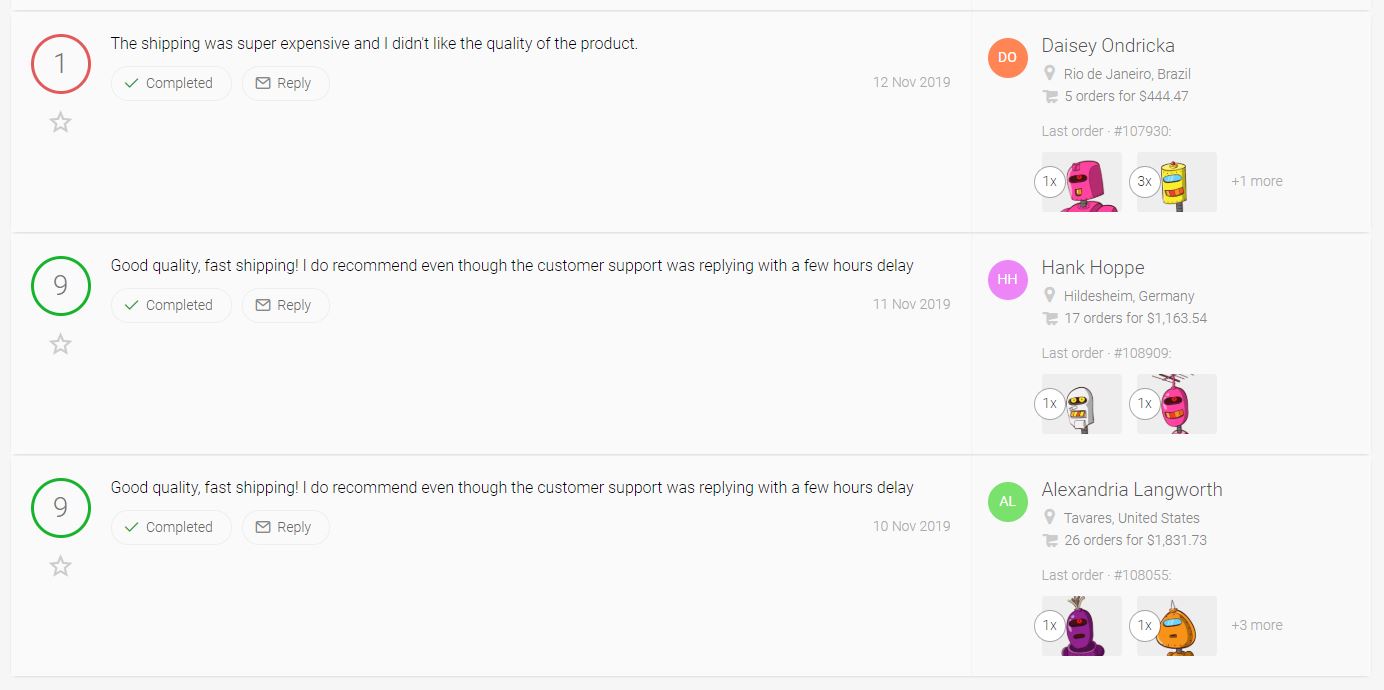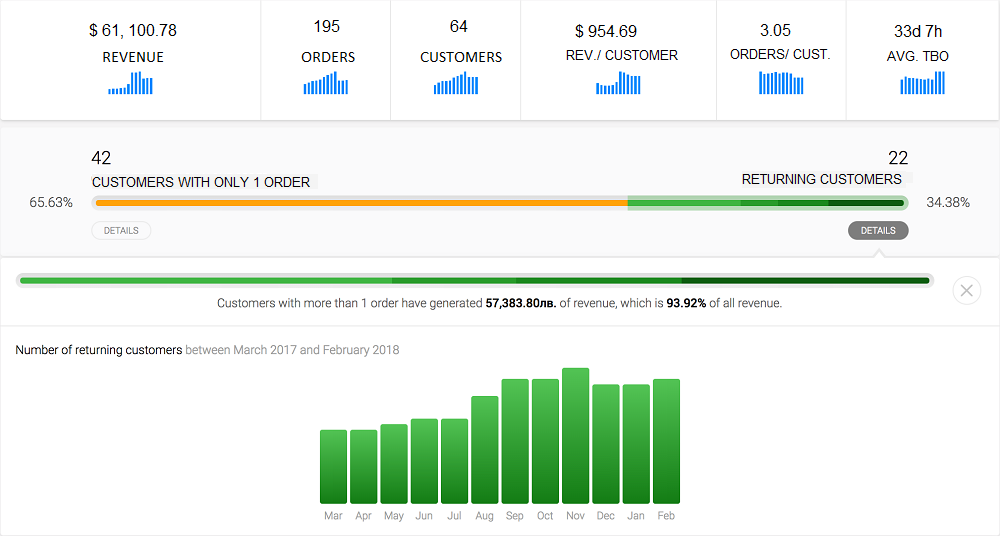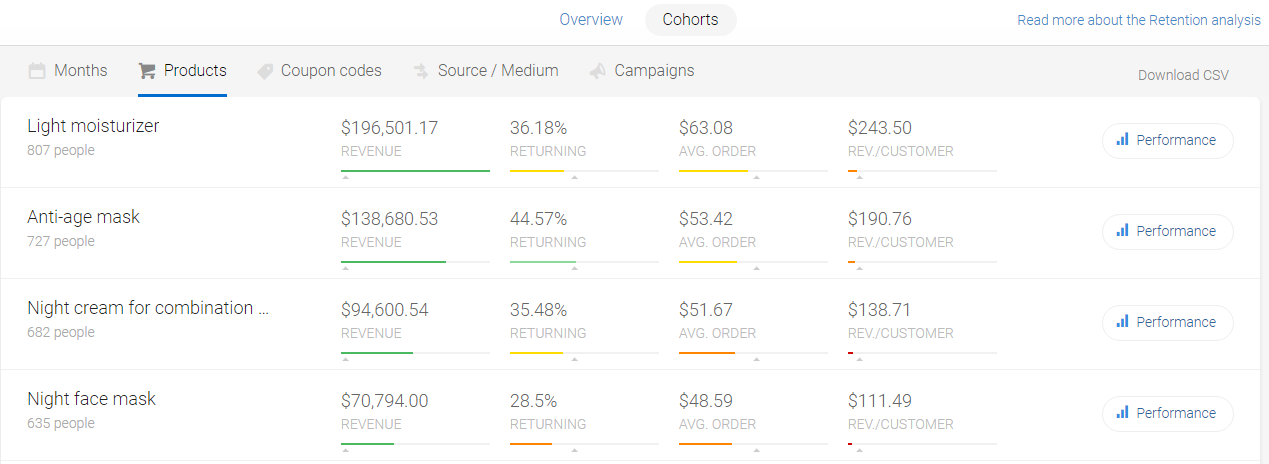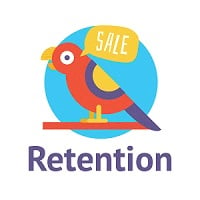
Starting with ecommerce customer retention marketing
Ecommerce is booming, getting new customers is getting harder and pricier. How do you grow in cut-throat competition? You work with what you already have – and paid for!
Retention marketing and brand equity enables sales to your existing customers.
What is customer retention marketing?
It is working to keep customers as such for longer, buying often and buying more. It is the active marketing effort to get repeat orders and loyal customers.
It is the exact opposite of relying on one-time buyers where you have to acquire new customers all the time, letting them go after just one sale.
Retention Marketing definition
In ecommerce, retention marketing are the activities that make customers shop from you repeatedly. It aims to maximize the return from a customer. Retention marketing proactively uses data for ongoing engagement, personalization of the shopping experience and winning the loyalty of customers.
New customers cost 5 times more than keeping an old customer.
The chance of converting a new customer is 5-20% while the chance of converting an old one is 60-70%.
Retention marketing effects compound over time, bringing costs down and boosting profits every time a customer returns.
Benefits of retention marketing
Making retention marketing a priority over constant acquisition, you:
- increase marketing ROI because once you pay to acquire a customer, they place numerous orders, paying off the initial CAC and increasing your profitability
- cut down cost per sale because retention relies on owned channels (emails) where you have full control
- don’t rely only on acquisition to make sales – you don’t need to invest in driving traffic indefinitely to grow
- shorten the buying cycle – engaged customers shop more often
- get stable cash flow – regular customers shop reliably so revenue is more predictable
- make customers happier thanks to the conscious effort to serve them well resulting in loyalty and word-of-mouth referrals
- strengthen your brand – the more loyal fans you have, the more attractive it looks to others as well
- will be able to invest in growth – retention saves you money while generating better profits so you’re able to put them back into new products, markets or customers
When do I need to start working on customer retention?
Naturally, at launch, you have to get some traffic and traction first. But you should start out with retention in mind. You should set up for it from customer #1. How you start out treating your customers will impact long-term retention and loyalty.
Note: Unfortunately, retention is tied to your products. It’s applicable to most but not all products. If you sell things like wedding items or boats, we suggest you work on a referral strategy instead to make sure people spread a word-of-mouth on your behalf even if they’re not likely to buy from you again (for obvious reasons).
Key retention metrics
How to know if your customer retention efforts are working? Just like you monitor your traffic, conversions and other essential ecommerce metrics, you can check the health of your retention, too.
Retention rate
Also known as repeat purchase rate, this is the share of returning customers out of all customers. It shows whether you manage to retain customers or let them slip away after 1 order. A retention rate of 28% is quite good, our recent report on DTC brands found.
More about repeat purchase rate
Order frequency
That’s the average time between orders or how often people shop from you. It can be days, weeks, months, even years.
Knowing how often your customers shop from you, you can time your marketing campaigns perfectly and get more orders with less effort. Our reports says a TBO of 102 days is the average.
More about order frequency
Orders per customer
Naturally, more orders mean stronger loyalty. This metric tied to others like CLV and order frequency may mean that people stay with your brand for years and/ or shop very often, both of which are great. We found that 1.8 orders is the average in ecommerce.
Customer lifetime value
That’s the all-time amount spent by a customer in your store. It’s probably the most important retention metric in ecommerce. It helps you set acquisition budgets and estimate revenue goals. The absolute average is $168.
More about CLV in ecommerce
Customer satisfaction
Customer satisfaction is at the core of customer loyalty.
If customers are unhappy, though, your retention rate will be low. Ratings of the shopping experience and direct feedback will explain why you lose customers or why they love you.

Feedback score in Metrilo
Looking at all these ecommerce retention metrics, you should be able to map your customer lifecycle stages: how often people buy and for how much, when do they become profitable repeat customers, how much you can spend on their acquisition, why are you losing customers, and more.
Need to measure your store’s retention metrics?
Here’s where Metrilo can help.
Retention marketing with Metrilo
Retention marketing relies on understanding your customers and using insights to stimulate repeat orders. The more you know about their buying behavior, the better shopping experience you can offer. Without such data, you’re just shooting in the dark, sending one-size-fits-all offers that do little if anything to retain your customers.
So to do retention marketing, you need to track customer behavior and tailor your offers, set up campaigns and engage customers based on the data.
Metrilo provides this data by automatically tracking customer behavior on your site. You get:
- All retention metrics listed above in a neat Retention Dashboard

- Clear view of one-time buyers to start engaging them
- Cohort performance – see how cohorts by month, product, coupon or campaign shop over time and when their second, third and so on orders happen.
Related: How cohort analysis helps retention

- Automated feedback gathering so you see why people would buy or not buy from you again
- Many filtering options to segment customers by any metric or behavior in order to tailor and send them relevant offers
- Automated emails for ongoing customer engagement – reorder reminders, post-purchase, win back, etc.
Probably the most useful part of the Metrilo retention platform is the retention analysis, which will tell you:
- how many people come back to buy,
- how often that happens,
- what products make them loyal,
- what campaigns attract customers who later become loyal, etc.
You will know what works for customer retention and will be able to do more effective marketing.
Some examples of the insights you may discover with a retention marketing platform:
- Maybe deep discounts don’t bring you loyal customers and don’t contribute for a higher customer lifetime value
- some months naturally get more loyal buyers – maybe it has to do with the nature of the product?
- some products might attract only one-time buyers while others get people hooked on your brand
- buyers of product A tend to shop more often than buyers of product B
- Maybe typically, holiday shoppers are active around Mother’s and Father’s Day again and no campaign activates them before that
How retention helps you make more money
Here a few of the use cases for the insight you get with Metrilo’s retention analysis and how to turn them into extra sales:
Understand your customer life cycle
Not sure how often people need your products and how many times they buy from you? We have those metrics for your store calculated with historical data – ready to turn your marketing upside down.
Send inviting emails at the right time when customers are ready to buy again
Thanks to data, you can be well-prepared and proactive in driving repeat sales. How to reach them exactly when chances of conversion are the highest and not waste email “bullets” in vain.
Stimulate additional sales by reminding idle customers when they pass the time for a new order
How to use data to re-engage customers and not let them slip away.
Plan your remarketing for the best possible time
Learning from the historical data Metrilo processes, you can predict the behavior of this year’s holiday shoppers and turn them into loyal customers.
Evaluate and optimize your use of coupons for great returns
You can drop the badly performing coupons and use more of those that bring you quality customers, good fits, who become loyal to your shop.
Leverage seasonality
Analyzing your customers by the month of their first purchase will give you a pretty good picture of seasonality in your niche.
Improve exposure (promos, featured, ads, samples, content) to the best loyalty-stimulating products so customers get hooked on your brand
Some products stimulate more customer loyalty and repeat orders than others. With Metrilo’s product cohort analysis, you’ll know which those products are to use in your marketing and get higher LTV.
Knowing where you stand with retention now, you can start improving, implementing the best customer retention strategies ecommerce brands use.
Build and grow your ecommerce brand
Metrilo’s mission is to help you build your ecommerce brand and win your place in the customer’s heart. We share what we learn from our daily work with product innovators and founders here. Subscribe to our weekly newsletter to get the freshest lessons and conquer your niche.
We promise, no spam.
Thank you for subscribing!
See you soon :-)




